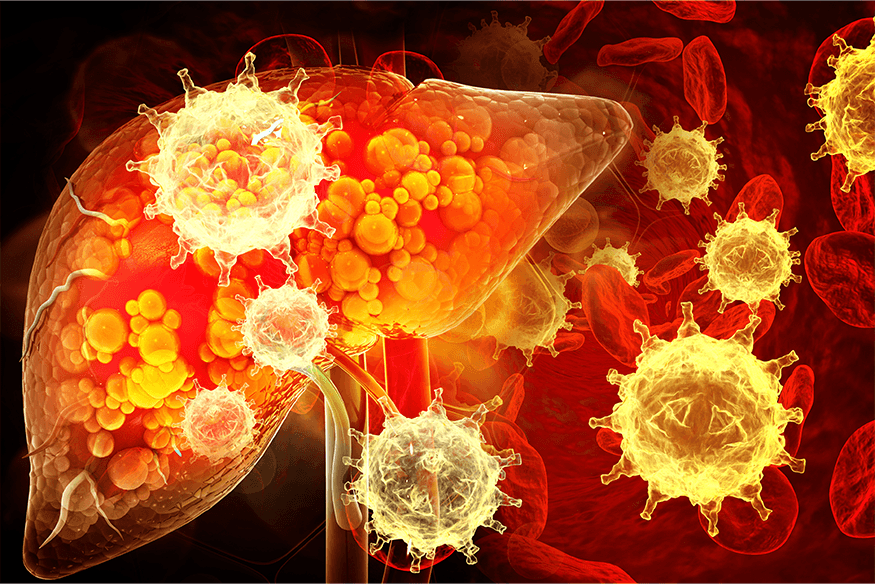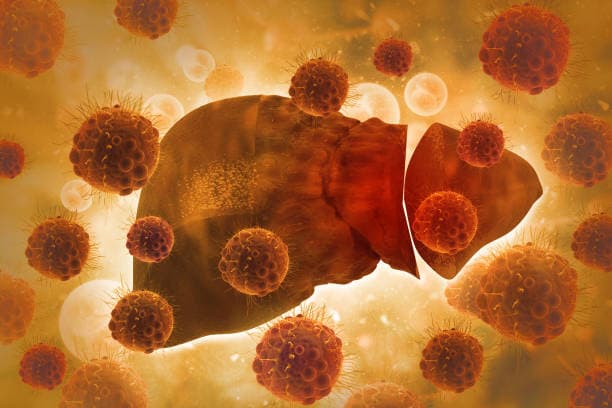Recognizing the signs of liver transplant rejection is crucial for timely intervention and treatment. Liver transplant rejection occurs when the body's immune system attacks the new liver, considering it a foreign object.
Liver transplant rejection
Liver transplant rejection is a serious complication that can occur when the body's immune system identifies the new liver as a foreign object and attacks it. This response is a natural defense mechanism intended to protect the body from harmful invaders, but in the context of a transplant, it can threaten the success of the procedure. Rejection can be categorized into three main types: hyperacute, acute, and chronic.
Hyperacute rejection occurs within minutes to hours after the transplant, though it is exceedingly rare thanks to modern screening methods that match donor and recipient tissues more accurately.
Acute rejection is more common, typically happening within the first six months post-transplant. The immune system's aggressive response can cause inflammation and damage to the new liver, leading to symptoms such as jaundice (yellowing of the skin and eyes), dark urine, clay-colored stools, fatigue, abdominal pain (particularly in the upper right side), and fever.
Chronic rejection can develop over years and is characterized by a slow, progressive loss of liver function. Symptoms may include persistent fatigue, itching, and fluid retention.
Early detection of rejection is crucial. Regular monitoring through blood tests and liver biopsies helps in identifying signs of rejection promptly. Blood tests can reveal elevated levels of liver enzymes, indicating liver inflammation or damage. A liver biopsy, where a small sample of liver tissue is examined under a microscope, can confirm the diagnosis of rejection and assess its severity.
Preventing rejection is a continuous process that requires strict adherence to medication regimens and regular follow-up appointments with healthcare providers. Patients must also be vigilant in monitoring their health and reporting any unusual symptoms to their medical team promptly. Lifestyle modifications, such as maintaining a healthy diet, avoiding alcohol, and preventing infections through good hygiene practices and vaccinations, are also important in supporting liver health post-transplant.

Signs of Liver rejection after transplant
Recognizing the signs of liver rejection after a transplant is crucial for timely intervention and management. Rejection occurs when the body's immune system identifies the new liver as a foreign object and attacks it. There are three main types of rejection: hyperacute, acute, and chronic. However, acute rejection is the most common and usually occurs within the first six months post-transplant.
Early signs of liver rejection often include jaundice, which is characterized by a yellowing of the skin and eyes due to elevated bilirubin levels. Dark urine and clay-colored stools are also common indicators. Patients may experience persistent fatigue and weakness, which can be easily overlooked but are significant warning signs. Abdominal pain, especially in the upper right side where the liver is located, is another critical symptom to watch for. This pain can range from mild discomfort to severe cramping.
Fever is a common symptom of rejection and can be accompanied by flu-like symptoms, including headaches, body aches, and chills. Swelling and tenderness in the area of the liver transplant can also occur, often presenting as a general feeling of discomfort and bloating in the abdominal region. Severe itching or rash may arise, caused by the buildup of bile salts in the body when the liver is not functioning properly.
Increased levels of liver enzymes (such as AST and ALT) detected through blood tests can indicate liver inflammation and damage. These enzyme levels are closely monitored in post-transplant patients, as significant increases can suggest rejection. Regular liver function tests are crucial for early detection of these biochemical changes.
Weight gain and fluid retention, especially in the legs and abdomen, can also be signs of liver rejection. These symptoms result from the liver's impaired ability to regulate body fluids. Additionally, mental confusion or difficulty concentrating may occur due to the liver's diminished capacity to filter toxins from the blood.
It's essential for liver transplant recipients to attend regular follow-up appointments and undergo routine blood tests and liver biopsies to monitor for signs of rejection. Early detection and prompt medical intervention are critical to managing rejection and preserving the function of the transplanted liver. Treatment typically involves adjusting immunosuppressive medications to better control the immune response.

Liver rejection treatment
Liver rejection treatment is critical in ensuring the long-term success of a liver transplant. When the body’s immune system identifies the new liver as foreign, it can mount an attack against it, leading to rejection. Prompt intervention and effective management are essential to preserve the function of the transplanted liver and the overall health of the recipient.
The primary treatment for liver rejection involves the use of immunosuppressive medications. These drugs are designed to reduce the activity of the immune system, preventing it from attacking the transplanted liver. There are several types of immunosuppressive medications, including calcineurin inhibitors like tacrolimus and cyclosporine, antiproliferative agents like mycophenolate mofetil, and corticosteroids such as prednisone. Each of these drugs works in a slightly different way to suppress the immune response, and they are often used in combination to achieve the best results.
Tacrolimus and cyclosporine are commonly prescribed due to their effectiveness in preventing acute rejection. They inhibit the activity of a specific protein involved in the immune response, reducing the likelihood of the immune system attacking the new liver. Mycophenolate mofetil works by inhibiting the proliferation of immune cells, further decreasing the risk of rejection. Corticosteroids like prednisone are used to manage acute rejection episodes due to their potent anti-inflammatory effects.
The dosage and combination of these medications are carefully tailored to each patient’s needs. Initially, higher doses may be required to manage rejection, but these are typically reduced over time to minimize side effects. Regular monitoring of drug levels in the blood is essential to ensure the medications are effective while avoiding toxicity.
In addition to medication, lifestyle modifications and regular monitoring play a crucial role in managing liver rejection. Patients must adhere to a strict medication regimen, attend regular follow-up appointments, and undergo routine blood tests to monitor liver function and detect any signs of rejection early. Maintaining a healthy lifestyle, including a balanced diet, avoiding alcohol, and preventing infections through good hygiene practices and vaccinations, is also important in supporting liver health.
If rejection is detected, the treatment plan may be adjusted. This could involve increasing the dosage of immunosuppressive medications or adding new ones to the regimen. In severe cases, a liver biopsy may be performed to assess the extent of the rejection and guide treatment decisions.

How do you know if your Liver is rejecting?
Liver rejection occurs when your immune system identifies the transplanted liver as foreign and mounts an attack against it. This immune response can lead to inflammation and damage to the liver, and if left untreated, it can jeopardize the success of the transplant.
One of the earliest and most noticeable signs of liver rejection is jaundice, characterized by yellowing of the skin and eyes. This occurs due to elevated levels of bilirubin in the blood, indicating that the liver is not functioning properly. Alongside jaundice, you might notice dark urine and clay-colored stools, which are also signs of impaired liver function.
Another common symptom is persistent fatigue or weakness, which may be easily overlooked but is significant. You might feel unusually tired, lack energy, or find it difficult to carry out normal activities.
Abdominal pain, particularly in the upper right side where the liver is located, is another critical indicator. This pain can range from mild discomfort to severe cramping and is often accompanied by tenderness and swelling in the area.
Fever is a common symptom of liver rejection as well, often accompanied by flu-like symptoms such as headaches, body aches, and chills. If you experience a high fever (usually above 38°C), it is essential to seek medical attention promptly.
Severe itching or rash may also arise, caused by the buildup of bile salts in the body when the liver is not processing them correctly. Swelling in the abdomen, legs, or ankles, and sudden weight gain due to fluid retention are additional signs that the liver may be rejecting. This fluid retention occurs because the liver’s impaired function affects its ability to regulate body fluids properly.
Changes in mental status, such as confusion, difficulty concentrating, or memory problems, can occur due to the buildup of toxins in the blood that the liver is no longer able to filter effectively. These neurological symptoms, collectively known as hepatic encephalopathy, can be subtle but are significant indicators of liver dysfunction.
Blood tests play a crucial role in detecting liver rejection. Elevated levels of liver enzymes, such as AST and ALT, can indicate inflammation or damage to the liver. Regular liver function tests and monitoring are essential for early detection. If these enzyme levels are significantly higher than normal, it suggests that the liver is under attack.

Conclusion
In summary, recognizing the signs of liver transplant rejection—such as jaundice, dark urine, fatigue, abdominal pain, fever, severe itching, swelling, and changes in mental status—is crucial for timely medical intervention. Early detection allows for prompt treatment, which is vital in preserving the function of the transplanted liver and ensuring the long-term success of the transplant. Regular monitoring through blood tests and liver biopsies, along with strict adherence to immunosuppressive medications, plays a key role in managing rejection. By staying vigilant and maintaining open communication with healthcare providers, transplant recipients can significantly improve their chances of maintaining a healthy and functioning liver.
Read More